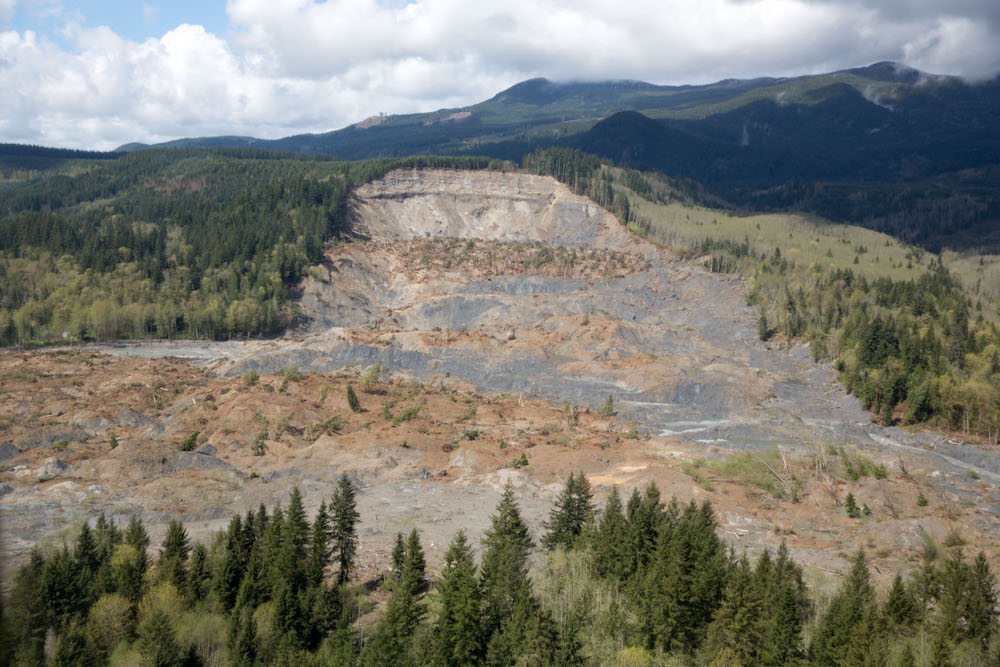
Homeowners insurance is there to protect your most valued possessions, but what happens when there is no coverage in your standard policy for what you need protection from? Unfortunately, that is the case with landslides and mudslides.
Natural disasters taunt homeowners in the various ways that they can tear up your property. There have been add-ons created for insurance policies to cover a majority of these including flood and earthquake coverage, but landslides and mudslides have been left out of the mix. They have been categorized as ‘earth or land movements’ and because of the extensive damage that they cause, the standard homeowners policy won’t allow for them. There is something that you can do and we’ll get to that as we discuss this further.

Landslides And Mudslides
The U.S. Geological Survey indicates that upwards of 50 people die each year in landslide/mudslide-related instances with nearly $4 billion worth of damages. According to the Survey, the Pacific Coastal Range, as well as the Rocky and Appalachian Mountains, are the regions most prone for these occurrences with the states of Oregon, California, Hawaii, Washington, and Alaska having more frequent instances than the other states in the U.S.
A mudslide is defined as a type of fast-moving landslide that takes place when an excessive amount of water forces the erosion of the soil within a steep slope, a rapid melting of snow on the head of a mountain, or a great accumulation of heavy rainfall which causes soil to liquify and forces it downhill wiping out everything it comes across.
A landslide is when there is a type of disruption that occurs to the stability of the slope whether it be an earthquake or a volcano eruption or drought or even heavy rainfall forcing rock, debris, soil, and all things with it to speed downward destroying everything in its path.
If you are living in a home that is situated near a hillside or happens to be on the side of a cliff or mountain or if you are in one of those areas that are prone to landslides and mudslides, buying an extra landslide and mudslide insurance policy is warranted and it is possible.
Difference In Conditions (DIC) Policies
Difference In Conditions policies or DIC are policies that are offered to cover damages received to your property from landslides, mudslides, or mudflow disasters. In order to find out if your insurance company offers this type of policy, you should call your agent. If they don’t offer this, call your state Department of Insurance to get a list of carriers in your area that do.
DIC will cover the cost to rebuild your home back to its original condition. It won’t add any new safety features to aid in precautions for future landslides. It will not allow for restabilization of the land, but it does get you back to where you began.
This insurance is costly with the deductible being based on a percentage as opposed to a fixed amount and the premium can range from hundreds to upwards of thousands per year. The cost of the policy is based on the slope of your property, the distance of your home from any mountains or hillsides, and the frequency as well as the severity of the overall average loss within the area.
Another really good idea if you are in a susceptible area is to buy earthquake and flood policies on top of the DIC. When there is a landslide or mudslide, there is generally a large volume of water or possibly an earthquake at the root cause. Having these policies will save you the headache when it is being determined what the actual cause of the damage was.
U.S. Geological Survey
The U.S. Geological Survey offers tons of information on the areas that are prone to landslides, mudslides, and mud flow. It provides information on what these events are, how to prevent them, maps that are interactive so you can see the high-risk places and avoid them in your search for a home in specific regions.
If you are considering buying a home in a U.S. region that may be more prone to these catastrophic events with elevated regions or hillside areas or frequent rainfalls, your lending agent may institute a requirement for a DIC policy as well as a geological survey prior to allowing for financing. In this same vein, you may want to check things out yourself before you purchase a home to make sure the area is not susceptible so that you won’t be dealing with damages in your future.

